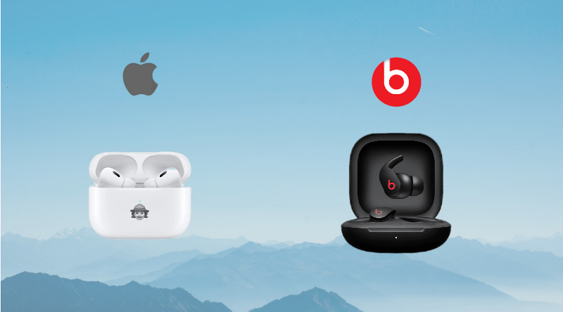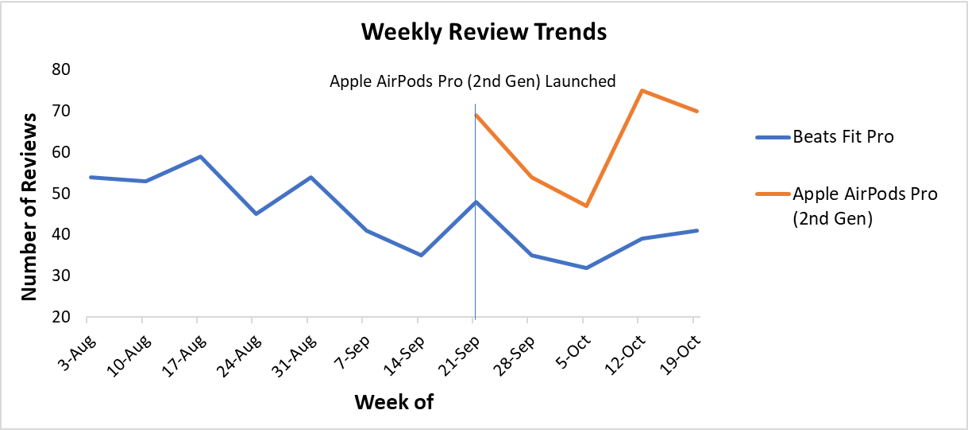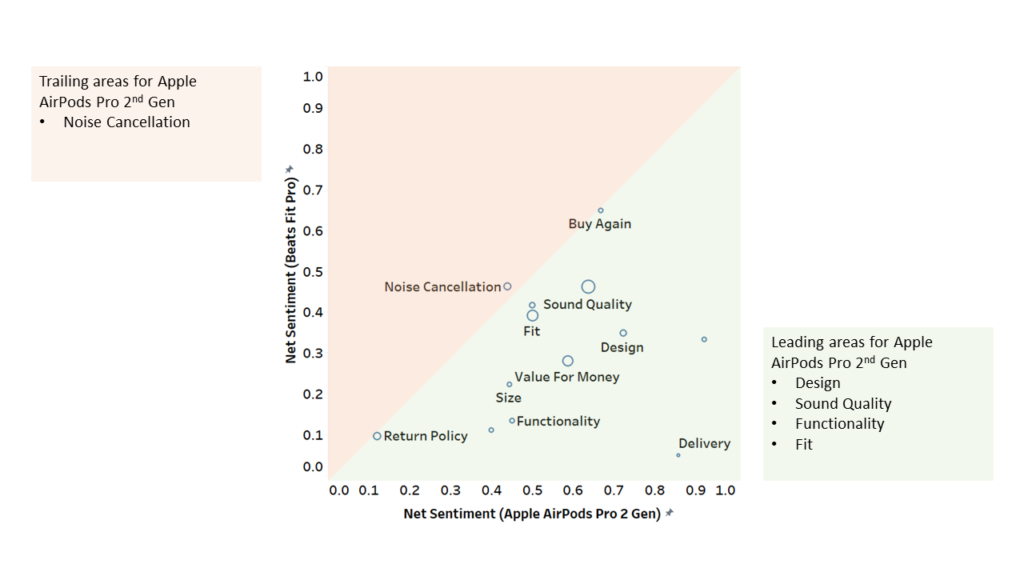Consumers are increasingly turning to online reviews to make their purchase decisions. Brands can also use this rich data to glean insights into their and competitors’ products. Such competitive benchmarking allows brands to understand the strengths and weaknesses of their products. Brands can use strengths in marketing/communications, and weaknesses in prioritizing ideas for product innovation.
Let us take the example of Apple AirPods Pro (2nd Gen) and Beats Fit Pro. While the lifetime ratings of Apple AirPods Pro (2nd Gen) and the Beats Fit Pro are high (4.5+ out of 5 stars), comparing ratings with a text review paints a different picture.
Apple AirPods Pro (2nd Gen)’s rating of 4.3 (in 315 reviews) is significantly higher than Beats Fit Pro’s rating of 3.7 (in 536 reviews). In addition, the volume trend graph shows that the number of reviews of Apple AirPods Pro (2nd Gen) is going up while that of Beats Fit Pro is going down, indicating a higher share of voice for Apple AirPods Pro (2nd Gen).



